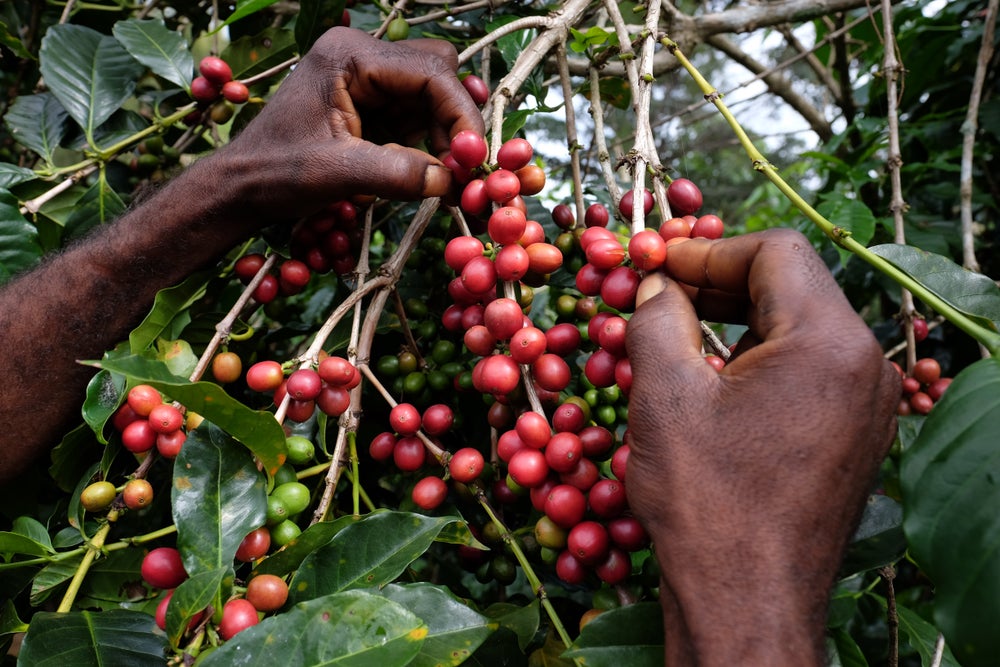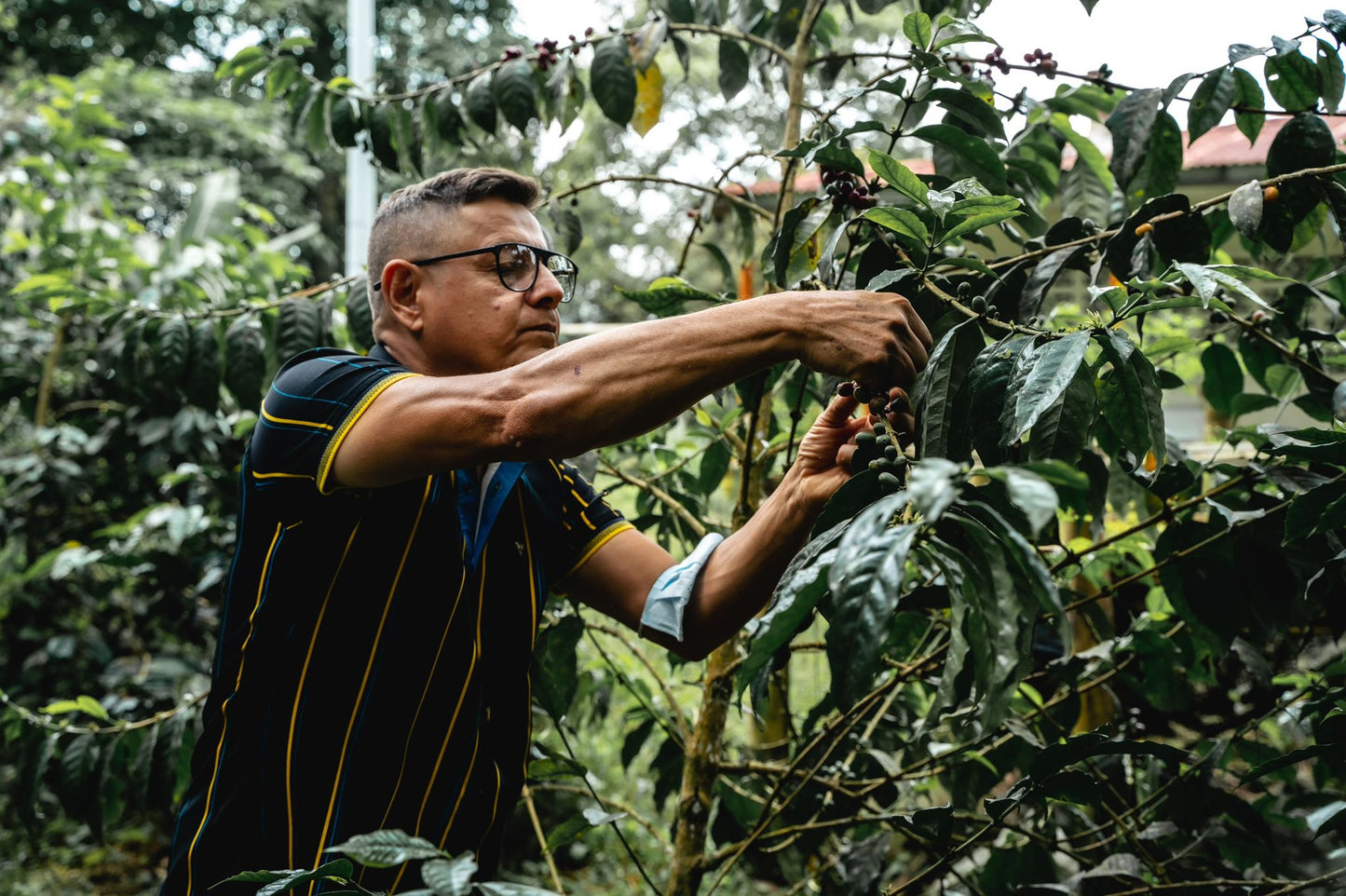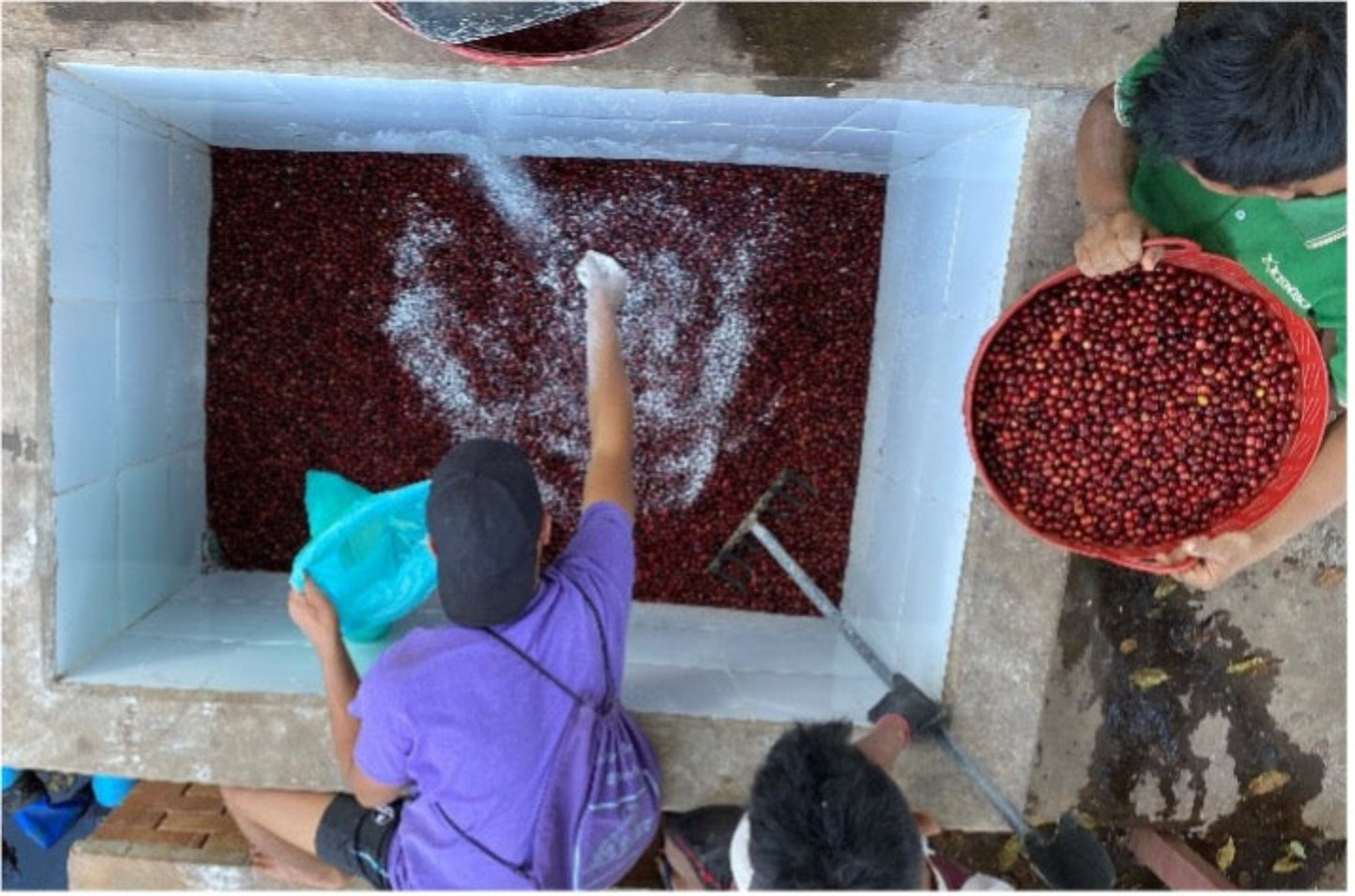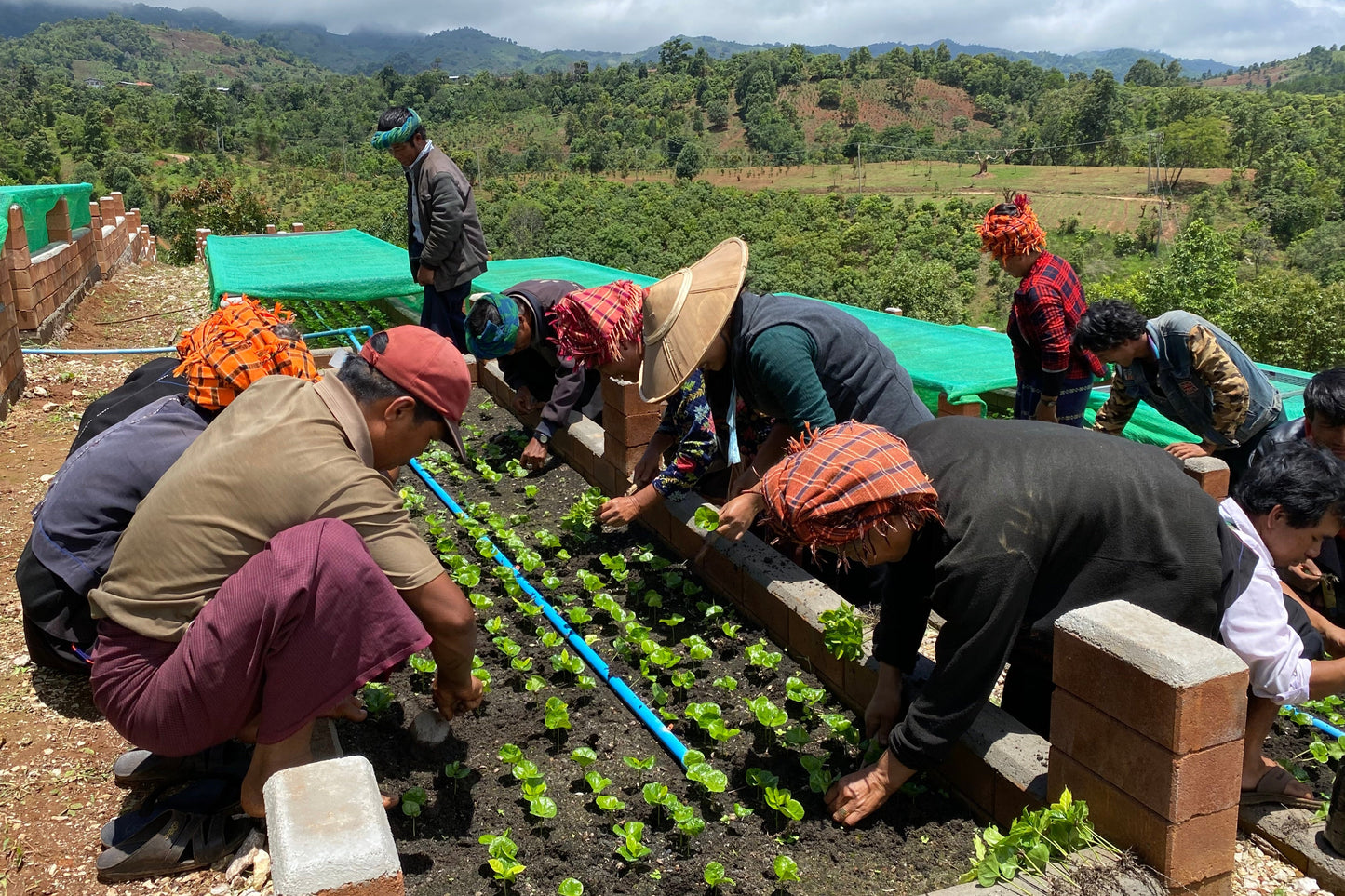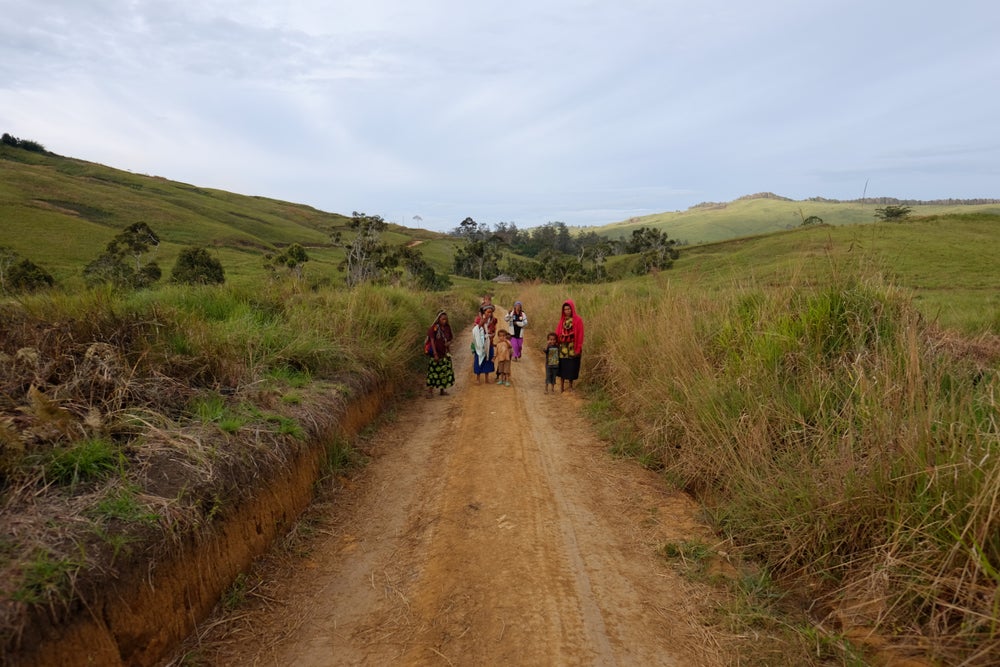
ORIGIN SERIES: PAPUA NEW GUINEA
Origin Series delves into coffee growing regions around the world and turns you into a knowledgeable coffee snob.
In this first installment, we set our sights on the lush, mountainous landscapes of Papua New Guinea (PNG), a country that has made significant strides in producing some of the world’s most unique and flavourful coffees.
HISTORY
Coffee was introduced to Papua New Guinea in the late 19th century by British colonists, who thought the rich volcanic soil of the island’s highlands would be perfect to grow Arabica coffee plants. They planted the Blue Mountain variety, originally grown in Jamaica, instead of opting for the usual robusta species grown across Asia and the Pacific at the time.
The country’s first coffee plantation was established in 1926 in the Eastern Highlands, and by the 1960s, coffee had become one of PNG’s leading agricultural exports. Today, coffee is a vital part of the economy, with around 1 million bags of coffee exported each year. And it provides livelihoods for thousands of smallholder farmers: 40% of the population’s income is generated by coffee production.

COFFEE GROWING PROCESS
Most of Papua New Guinea’s coffee is grown on small family-owned plots that work more or less like gardens. Coffee trees grow among other crops like banana, papaya or legumes. A majority of PNG’s coffee is grown organically, without the use of pesticides, even if it’s not certified.
Despite the high quality of PNG coffee, the industry faces significant challenges: infrastructure issues, fluctuating market prices, and the effects of climate change. Many coffee-growing areas are remote, making transportation of goods difficult and costly. As a result, many growers turn to more economical or food crops.
The coffee cherries are typically handpicked and processed using the washed method, which leads to clean, bright flavours. After the pulp is removed, the beans are washed, dried, and then hulled to remove the parchment layer before being sorted and graded for export.
GROWING REGIONS
Papua New Guinea’s coffee-growing regions are primarily located in the highlands, where the altitude, climate, and fertile volcanic soil create the perfect conditions for coffee cultivation. The main regions include:
Eastern Highlands: This is the heart of PNG’s coffee production. Cold temperatures, volcanic soils and high altitudes create great flavour profiles. The town of Goroka is a central hub for coffee trade and processing.
Western Highlands: Known for its rugged terrain and rich cultural heritage, this region produces coffee with deep, complex flavours thanks to diverse microclimates and high elevations.
Simbu (Chimbu) Province: Coffee from Simbu often exhibits bright acidity and floral notes, thanks to the high elevations and cool temperatures.
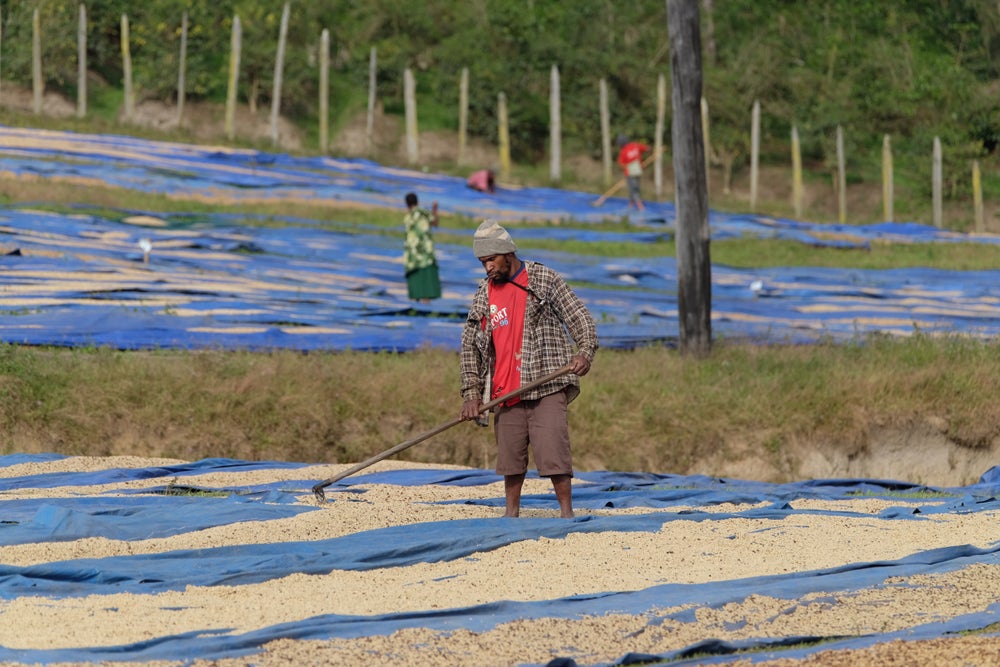
COFFEE VARIETIES
Papua New Guinea is home to several coffee varieties of Arabica that contribute to its reputation for producing high-quality, specialty coffee. The most common varieties grown include:
Typica: Typica is one of the oldest Arabica varieties. It thrives in PNG’s high-altitude regions and is known for its sweet, clean, and balanced flavour profile with mild acidity.
Arusha: Arusha is closely related to Typica and shares many of its desirable traits. It is well-suited to PNG’s highlands and produces a cup with bright acidity and complex flavours, often with fruity and floral notes.
Bourbon: Bourbon is another traditional Arabica variety that flourishes in PNG’s rich volcanic soils. It is prized for its well-rounded body, sweetness, and fruity notes.
Blue Mountain: Originally from Jamaica, Blue Mountain is grown in limited quantities in PNG, particularly in the Eastern Highlands. It is renowned for its smooth, mild flavour with a hint of floral and nutty undertones.
Catimor: A hybrid of Timor and Caturra, Catimor is known for its disease resistance and high yield. While its flavour profile can vary, it often exhibits a good balance of acidity and body, with earthy and spicy notes.
Mundo Novo: A natural hybrid of Bourbon and Typica, Mundo Novo thrives in PNG’s diverse climates. It is valued for its high yield and resilience, producing coffee with a balanced acidity, full body, and sweet, nutty undertones.
PNG’S FLAVOUR PROFILE
Papua New Guinea’s coffees are renowned for their diverse flavour profiles, which can range from fruity and floral to earthy and spicy, depending on the variety and growing microclimate.
In the cup, expect a rich and complex profile with a balanced acidity and full body. Flavour notes often include tropical fruits, citrus, herbal/floral tea, and chocolate, nuts, and earthy undertones depending on the region.
PAPUA NEW GUINEA | BAROIDA ESTATE
Origin: Papua New Guinea, Aiyura
Farm: Baroida Estate
Variety: Bourbon, Mundo Novo, Typica, Arusha
Processing: Washed
Altitude: 1,700-1,850 masl
Roast Profile: Filter, light
Flavour notes: Granny Smith Apple, Green Tea, Persimmon
Recommended use: Filter, Aeropress, plunger
Stay tuned for more stories from our Origin Series as we continue to explore the diverse world of specialty coffee.
From the blog
Read the label is a series that breaks down the lingo & helps you choose the coffee that's right for...
READ THE LABEL: PROCESSING
Read the label is a series that breaks down the lingo & helps you choose the coffee that's right for...
ORIGIN SERIES: MYANMAR
We journey to the misty highlands of Myanmar, a Southeast Asian country whose specialty coffee scene is still emerging but...

